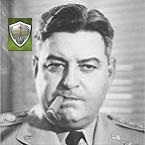Curtis Lemay
Posts: 12969
Joined: 9/17/2004
From: Houston, TX
Status: offline

|
SOVIET UNION 1941 AAR
This is an AAR for analysis of my test of my “Soviet Union 1941” scenario. As I did with the “France 1944 D-Day” and “Germany 1945 (Last Stand)” AARs, I’ll play both sides in hot seat (“changing hats” each player turn).
Also, my comments about tactics in the “Germany 1945 (Last Stand)” AAR deserve repeating with a few exceptions, so you may wish to review that, first (“Germany 1945” is a companion scenario to this one). That AAR is located here:
http://www.matrixgames.com/forums/tm.asp?m=1818685
Before we start, Let’s review the scenario a bit.
1. Starting Conditions: The Germans achieved strategic surprise at the start. That is modeled with shock penalties on the Soviet forces. These penalties lessen until they expire on turn 9. Also, the Soviets have no supply points until turn 2 – making all units unsupplied on turn 1. This prevents pocketed units from disbanding that turn. Finally, the Soviets are concentrated and vulnerable near the front & some are in Local Reserve deployment – they should be easy to carve up.
2. The Forces: The opposing forces are radically different. The Germans and their allies tend to have proficiencies in the 80-90s, while the Soviets tend in the 30s. And the Germans have organizational advantages in that their artillery is concentrated in their HQs, unlike the Soviets, plus they have some motorized units. They also have cooperation and Force Proficiency advantages. But the Soviets can expect to ultimately field about twice the quantities of equipment and squads. And the Soviets have some qualitative edges in certain tank designs.
3. The Map: All of the European Soviet Union is depicted. 1000 VPs are spread over the map. The most valuable hexes are found in Moscow, Leningrad, and Baku. But there is a large concentration of VPs in the Ukraine as well. The distance to those locations from the starting front gives the Soviet player a lot of strategic depth to trade for time. He’ll need it. The terrain contains a lot of badlands (now correctly displayed as marsh), that tend to block the German motorized units at critical places. The Soviet player needs to exploit this.
4. Finland/Arctic Circle: Finnish units are restricted by House Rule #3. They can’t attack beyond their limit line. But they can move beyond it – including overruns. So the Soviets still have to garrison the line in strength. Arctic Circle units have only 1 MP – this tends to limit their use to overruns. House Rule #4 restricts them there and keeps other units out.
5. Production/Logistics: This is a strategic scenario and production issues are extensively simulated. Control of Manpower Centers, Factories, Lend Lease Ports, Refineries, and Oil Fields all affect Soviet production & supplies, and some affect Axis supplies. New Soviet armies arrive as shells – to be filled out from the pools. Most Soviet manpower levy units have to be manually disbanded by the Soviet Player. The Soviet rail net can only be repaired at a 25km/turn pace – and only four paths can be focused on. Plus, they are withdrawn when winter hits. Note that engineers are concentrated in the “RES” iconed units.
6. Garrisons/Cadres: The Germans will have to leave some forces behind to deal with rear-area issues. All Soviet dense urban cities require garrisons (by House Rule #5, division-sized, except Leningrad & Moscow require corps-sized). Plus there are Soviet cadres that arrive in the rear that will have to be corralled and destroyed.
7. Ending Conditions: As the weather turns bad, the Germans suffer both increasing shock and, eventually, pestilence penalties. Some minor Axis allies are withdrawn or go into garrison deployment. Plus, the Soviets get shock-army reinforcements from the Far East. There is also a mud phase before winter that temporarily halts most activity. Finally, note that the scenario automatically ends at the end of turn 29 – there are never any extra turns.
Also note that this test was played with a new version (version 2). Version 2 includes a modified equipment file (modeling Soviet warships & German 610mm guns, plus German tanks all have the recon flag set). 270 of the Soviet manpower levy units are now automatically disbanded. Badlands now look like the marsh terrain they were substituting for. It uses a modified Numbers.bmp (adding Army Group & Theater unit sizes). And sets the MRPB to 3, among other minor changes. It should be included in the TOAW III 3.4 update.
Note that the scenario comes with extensive documentation, including a Word document, Excel spreadsheet, and a .SAL file. All are in the same folder as the scenario.
Finally, note that the game was played using TOAW III version 3.3. This primarily affects air losses to AAA.
Let’s get started.
|
 Printable Version
Printable Version




































 New Messages
New Messages No New Messages
No New Messages Hot Topic w/ New Messages
Hot Topic w/ New Messages Hot Topic w/o New Messages
Hot Topic w/o New Messages Locked w/ New Messages
Locked w/ New Messages Locked w/o New Messages
Locked w/o New Messages Post New Thread
Post New Thread